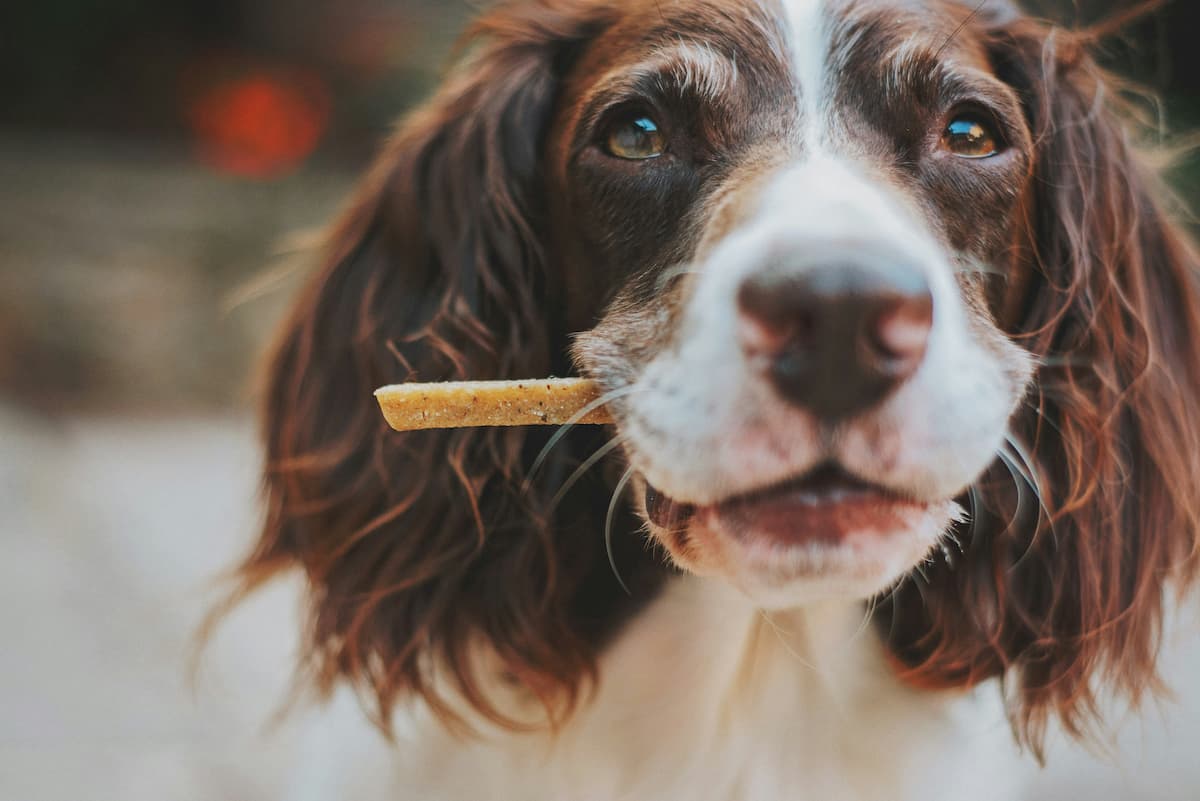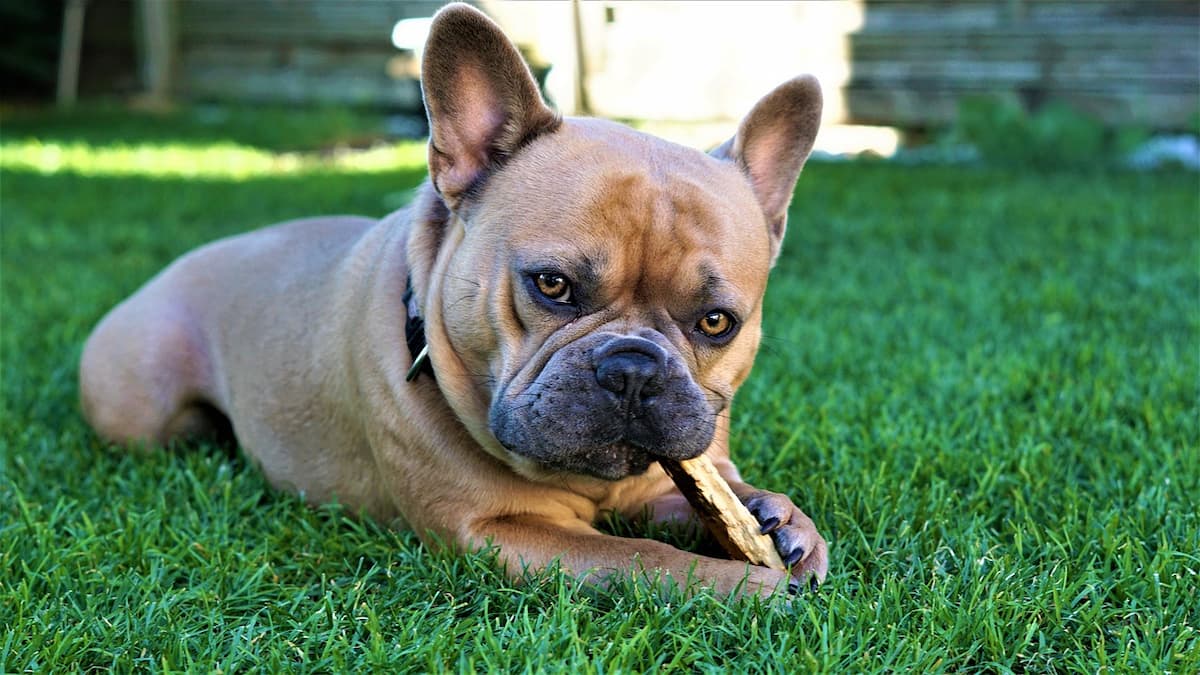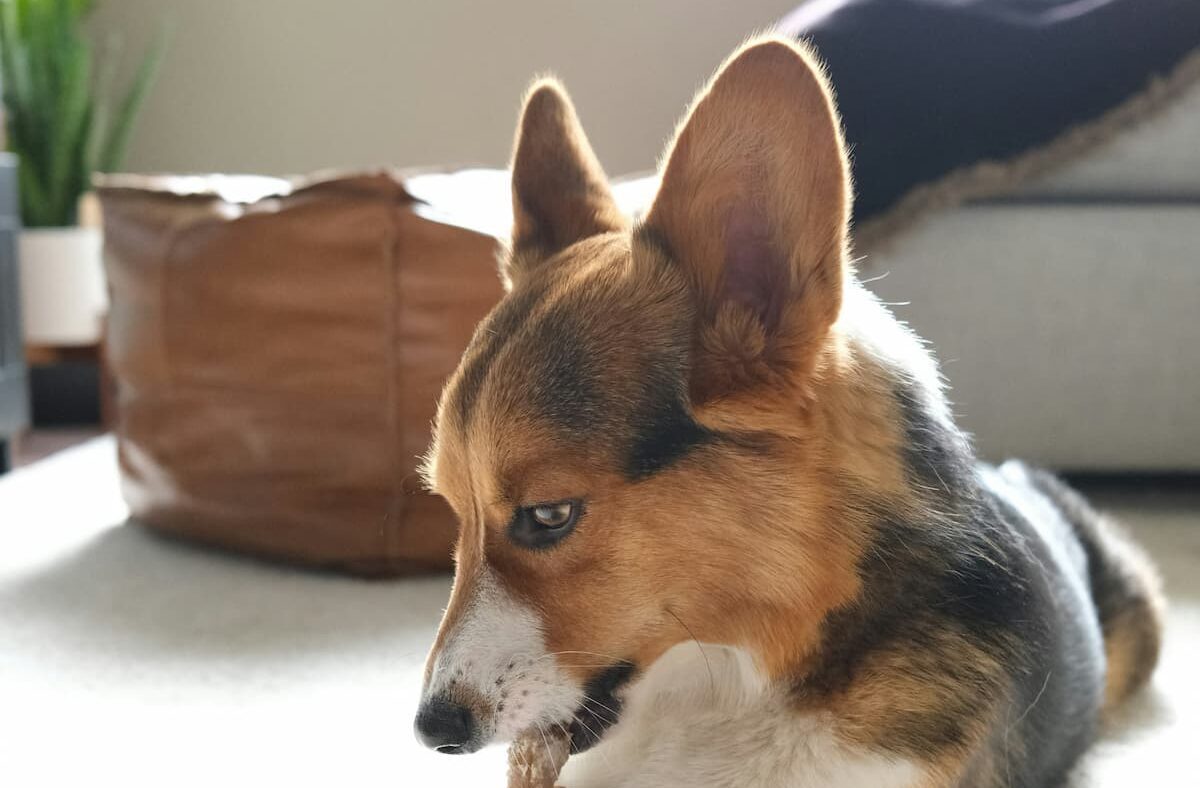Have you ever come home after a long day to find your favorite pair of shoes torn to shreds?
Or perhaps, discovered that your beautiful new carpet has become an intricate mosaic of chew marks?
If you’ve experienced this canine chaos, you’re certainly not alone.
Dogs, our beloved furry friends, seem to have an innate talent for transforming our prized possessions into chew toys.
But why do they do it?
What drives them to sink their teeth into our belongings?
Read on to find the answers.
Understanding the Root Cause of Your Pup’s Chewing Habit
Dogs and chewing seem to go hand in paw.
If you’ve ever come home to find your favorite pair of shoes in shreds or your couch cushions torn apart, you may be wondering why dogs have this seemingly destructive habit.
The truth is, there are several reasons why dogs chew:
First and foremost, it’s important to understand that chewing is a completely natural instinct for canines.
It’s deeply rooted in their DNA and has been passed down through generations of ancestors.
Back in the wild, dogs’ chewing behavior served a specific purpose – survival.
In their natural habitat, this instinct helped them to hunt, tear apart prey, and consume the necessary nutrients for survival.
Although our domesticated dogs no longer rely on this instinct for their primary sustenance, the evolutionary programming remains intact.
Another reason dogs chew is due to boredom or excess energy.
Chewing serves as a form of mental stimulation for dogs as it keeps their brains engaged and helps prevent boredom, which can lead to destructive behaviors.
When a dog chews, it releases endorphins, which can have a calming effect on their mood, similar to the way humans feel after completing a challenging puzzle or task.
Lastly, chewing also aids in the natural development and maintenance of a dog’s dental health.
Just like humans, dogs experience plaque and tartar buildup on their teeth, which can lead to various oral health issues such as tooth decay and gum disease.
By chewing on objects, dogs naturally help to remove this buildup, keeping their teeth and gums healthy.
Additionally, the act of chewing stimulates saliva production, which plays a crucial role in neutralizing harmful bacteria in their mouths.
And just like how we may reach for a warm cup of tea or a painkiller when we’re feeling uncomfortable, chewing provides a sense of relief for dogs.
The pressure exerted on their gums helps alleviate the soreness and itching associated with teething.
It’s like a mini massage for their gums!
How Your Dog’s Chewing May Signal Distress when You’re Away
Picture this: you come home from a long day at work, only to find that your once pristine living room is now a battlefield of chewed-up furniture and torn-up shoes.
Sound familiar?
Well, there’s a good chance your furry friend is suffering from separation anxiety.
Dogs, like humans, have complex emotions and can experience distress when they’re left alone.
When a dog feels anxious or stressed, chewing can provide temporary relief.
It’s their way of coping with the overwhelming emotions they’re experiencing.
So, if you’re wondering why your pup has turned your favorite pair of slippers into a pile of fuzzy fabric, it’s important to understand that it’s not a deliberate act of destruction.
It’s a cry for help.
So, how do you know if your dog’s chewing is a sign of distress?
Here are a few key indicators:
Excessive chewing: If your dog is constantly demolishing your belongings, it’s a red flag that something is amiss.
Normal chewing behavior is one thing, but when it becomes excessive and targeted towards specific items, it’s likely a result of anxiety.
Chewing while you’re away: When you’re not at home, dogs with separation anxiety often resort to destructive chewing.
If you notice that the destruction only occurs when you’re not around, this is a clear sign that your dog is struggling with being alone.
Accompanied by other signs of anxiety: Chewing may not be the only symptom of separation anxiety.
Look out for excessive barking, pacing, panting, or other signs of restlessness.
These additional behaviors further confirm your dog’s distress.
Remember, it’s essential to approach your dog’s chewing behavior with empathy and care.
Punishing or scolding your pet will only exacerbate their anxiety.
Instead, try gradually acclimating them to being alone by implementing positive reinforcement techniques and providing them with engaging toys or treats.
It’s also advisable to seek guidance from a professional dog trainer or behaviorist, as they can create a personalized plan to help your furry companion navigate their separation anxiety and reduce their destructive chewing habits.
Practical Strategies to Redirect Your Dog’s Chewing Behavior
Now that we know why dogs chew, let’s talk about some practical strategies to redirect this behavior.
One effective solution is to provide your furry friend with plenty of appropriate chew toys such as rubber or nylon ones specifically designed for teething.
These toys should be durable, safe, and designed specifically for dogs.
Choose ones that are different in texture, size, and shape, to keep your dog engaged and interested.
You can also try freezing some of their toys to provide a soothing and refreshing sensation for their gums.
By redirecting their chewing to appropriate items, you’ll save your belongings and keep them satisfied at the same time.
If your dog lacks proper outlets for their energy, they may resort to chewing as a way to entertain themselves.
Regular exercise and playtime, coupled with interactive toys that challenge their intelligence, can keep their minds and bodies occupied, reducing the likelihood of destructive chewing.
Lastly, if you suspect your dog’s chewing is linked to anxiety, it’s important to address the underlying cause and consider seeking professional help, such as consulting with a veterinarian or a certified dog trainer, to develop a behavioral modification plan.
Remember, chewing is a natural behavior for dogs, but excessive or destructive chewing can be a problem.
By identifying the root cause of your pup’s chewing habit, whether it’s teething, boredom, or anxiety, you can take the necessary steps to redirect their chewing behavior onto appropriate objects.
With patience, consistency, and the right approach, you can help your furry friend become a well-behaved chewer while keeping your belongings safe and intact.
FAQ
Q: Why do dogs chew things?
A: Dogs chew for a variety of reasons, and it’s important to understand that it’s a natural behavior rooted in their ancestors.
In the wild, dogs would use their teeth to chew on bones or tough prey to get essential nutrients and exercise their jaws.
Q: Does chewing serve any purpose for dogs beyond pure enjoyment?
A: Absolutely!
Chewing provides numerous benefits for dogs.
It helps keep their teeth clean by scraping away plaque and tartar buildup, preventing dental issues.
Regular chewing also satisfies their natural urge to explore and stimulates their mind, alleviating boredom or anxiety.
Q: What might trigger excessive chewing in dogs?
A: Excessive chewing can be a sign of underlying issues.
Puppies, for example, tend to chew more when they are teething.
Older dogs may chew due to dental problems or to soothe irritated gums.
Additionally, dogs might chew when feeling stressed or anxious, serving as a coping mechanism.
Q: How can I redirect my dog’s chewing habits onto appropriate items?
A: It’s important to guide your furry friend towards chewing on appropriate items instead of your favorite belongings.
Providing various chew toys designed specifically for dogs can be a great way to redirect their chewing behavior.
Make sure to choose safe and durable toys that won’t break easily or pose any choking hazards.
Q: Are there any strategies to prevent destructive chewing in dogs?
A: Absolutely!
Supervise your dog closely, especially when they’re young or newly introduced to your home.
Consider crate training or using baby gates to restrict access to certain areas until your pup develops better habits.
Additionally, providing plenty of exercise, mental stimulation, and attention will help alleviate any anxiety-related chewing.
Q: Are some breeds more prone to chewing than others?
A: While all dogs are capable of chewing, some breeds have a stronger inclination towards this behavior.
Puppies of all breeds tend to chew more because they are exploring the world and teething.
However, highly intelligent and energetic breeds, like Border Collies or Labrador Retrievers, may exhibit more destructive chewing tendencies if not given enough exercise and mental stimulation.
Q: Is there any way to teach a dog to stop chewing altogether?
A: It’s unrealistic to expect a dog to completely stop chewing, but you can certainly teach them what is appropriate to chew and what isn’t.
Consistent training using positive reinforcement techniques, like offering treats or praise for chewing on appropriate items, can be effective.
Remember, patience and consistency are key!
Q: Any final tips for dog owners dealing with chewing issues?
A: Absolutely!
One of the most important tips is to provide a variety of appropriate chew toys and rotate them periodically to keep your dog engaged.
Remember, dogs need to chew, so directing their energy towards acceptable outlets will help keep your furniture and shoes safe.
And always remember, a little bit of chewing is just a part of the wondrous package that comes with having a four-legged companion!
Final Thoughts
From understanding their natural instincts to unraveling the possible underlying causes, it’s clear that chewing is far more than just a mischievous habit for our furry friends.
For puppies, chewing is an essential part of their teething process, helping those little teeth break through the surface.
And let’s not forget about those adorable adult dogs who simply can’t resist gnawing on our favorite shoes or furniture – it turns out some of them may be seeking attention or dealing with anxiety.
It’s amazing to think that our four-legged companions, descendants of wild wolves, still carry these primal instincts to chew.
From bones and toys to our most cherished possessions, chewing is a way for our furry pals to relieve stress, keep their gums healthy, and just have some good ol’ fun.
But fret not, dear readers!
Although dogs’ chewing tendencies can sometimes test our patience, there are plenty of ways to redirect their chewing habits towards more appropriate outlets.
By providing them with a variety of enticing chew toys, engaging in regular playtime, and taking the time to train them, we can channel their chewing in a positive direction.
Remember, every dog is unique, and what works for one might not work for another.
It’s all about finding the right balance and understanding our fluffy companions on a deeper level.
So next time you spot your furry friend sinking their teeth into your favorite pair of socks or prized possessions, take a moment to reflect on their fascinating canine nature.
For dogs, chewing is so much more than just a way to frustrate us – it’s a natural behavior driven by their history and instincts.













